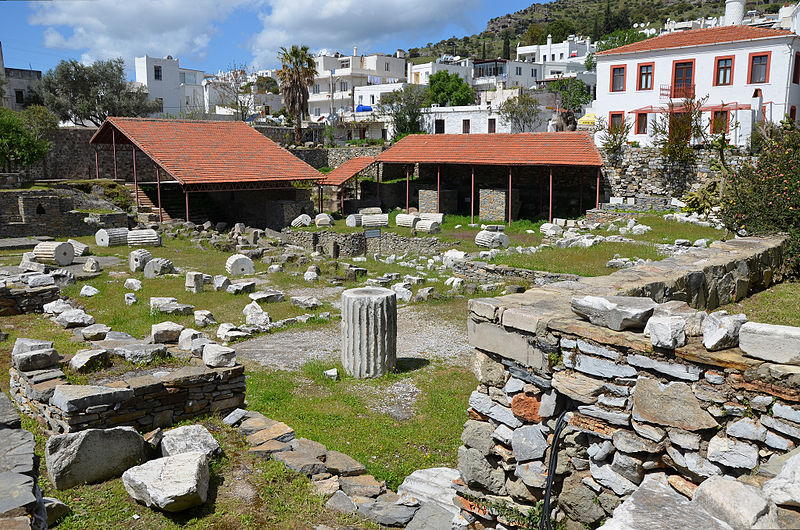The Mausoleum at Halicarnassus
The Mausoleum at Halicarnassus, also known as the Monument of Mausolus, was a tomb built between 353 and 350 BC in Halicarnassus for Mausolus, a native Anatolian from Caria and a satrap in the Achaemenid Empire, and his sister-wife Artemisia II of Caria. Satyros and Pythius of Priene, Greek architects, designed the edifice. Its elevated tomb structure is modeled after tombs in neighboring Lycia, which Mausolus attacked and occupied in 360 BC, such as the Nereid Monument.
The mausoleum was built on a hill with a view of the city. The entire edifice was encased in a courtyard. The tomb was located in the courtyard's center, on a stone platform. A ladder flanked by stone lions ascended to the top of the platform, which had several statues of gods and goddesses along its outside walls. Stone warriors on horseback guarded the tomb at each corner. The marble tomb rose as a square tapering block to one-third of the Mausoleum's 45 m (148 ft) height in the center of the platform. This area was covered with bas-reliefs depicting action events, such as the conflict of the centaurs with the Lapiths and the Greeks in battle with the Amazons, a race of warrior women.
Thirty-six slender columns, ten per side, with each corner sharing one column between two sides, rose for another third of the tomb's height. A statue stood between each pair of columns. Behind the columns was a strong cella-like block that supported the weight of the huge roof of the tomb. The pyramidal roof took up the majority of the final third of the height. On top was a quadriga, which consisted of four enormous horses hauling a chariot drawn by figures of Mausolus and Artemisia.
The Mausoleum was ornamented on all four sides with sculptural reliefs made by one of four Greek sculptors: Leochares, Bryaxis, Scopas of Paros, and Timotheus. The mausoleum was regarded as such an aesthetic accomplishment by Antipater of Sidon that he named it one of the Seven Wonders of the Ancient World. It was the latest of the six ruined marvels to be destroyed by successive earthquakes from the 12th to the 15th centuries.
Location: Halicarnassus (present Bodrum, Turkey)
Built: between 353 and 350 BC








